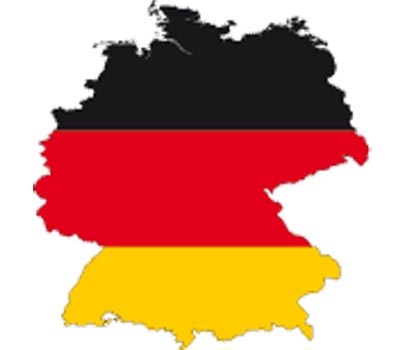Hunt for artist's works 50 years after his death
 Berlin - The son of pre-war Berlin artist George Grosz is asking museums in Europe, Asia and the United States to return several of his father's paintings they acquired decades ago.
Berlin - The son of pre-war Berlin artist George Grosz is asking museums in Europe, Asia and the United States to return several of his father's paintings they acquired decades ago.
So far, the museums have ignored the requests, arguing the works were obtained legally and not under dubious circumstances as claimed by Marty Grosz, 79.
Grosz, who lives in the US city of Philadelphia, has termed their refusal "awfully unjust." He dreams of a museum honouring his father being set up in Berlin where George Grosz produced a prolific number of paintings and sketches in the roaring, decadent 1920s.
Berlin cultural officials are not opposed to the idea, but question whether complications might arise assembling his work, which is strewn around the world.
Art historian Ralph Jentsch, organizer of several Grosz exhibitions over the years, acts as an executor of the artist's estate, and presently heads efforts to retrieve his works from museums in New York, Tokyo, Bremen and Vienna.
Among them is the artist's famous 1927 Portrait of Dr Neisse, in New York's Museum of Modern Art (MOMA), which was reportedly acquired at a bargain price of 850 dollars in the early post-war years.
Two other works, Pompe de funebre and Still Life with Okarina, believed to have been among a batch of Grosz paintings confiscated by the Nazis in the 1930s, are now in the Bremen Kunsthalle (Art Hall) in Germany; while his painting Promenade, is housed at the Bridgestone Museum in Tokyo.
Yet another Grosz work, Memory - An Alliance, is in the possession of the Museum of Modern Art in Vienna.
In 1926, Grosz had an agreement with Alfred Flechtheim, an influential Jewish art dealer who also acted as Paul Klee's art representative.
Several of his works were bought by German museums in that period, but prices paid during the world depression were pitifully low.
Grosz was shocked by the confiscation from German museums of 285 of his works - described as "degenerate art" by Nazi officials - in the mid-1930s. Dozens of his paintings were never seen again, and are thought to have been burned.
Other works were lost after Flechtheim fled Berlin in the wake of Nazi persecution. He'd kept about 70 Grosz paintings on a sales commission basis at his German gallery.
Flechtheim managed to smuggle about half of them out of the country when he left Germany, according to the German weekly Der Spiegel report.
Some 25 of the works were subsequently sold - but for a mere 15 Reichsmarks apiece. Others that "disappeared" in the turbulent 1930s resurfaced after the war and were offered for sale at an Amsterdam auction.
Grosz escaped to the United States with his family in mid-January 1933, shortly before Nazi henchmen smashed down the door of his Berlin studio, hoping to arrest him.
"I doubt very much whether I would have escaped alive if I had been around that day," Grosz said later.
Among the large number of works he left behind were paintings and sketches capturing the corrupt world of German financiers and arms makers as well as Berlin's decadent high society whirl of the 1920s.
Grosz had long sounded dire warnings about the Nazi menace, brilliantly depicting the panorama of brutality perpetrated by Hitler's thugs and stormtroopers.
Scores of his paintings were of prostitutes and their moneyed customers, with bloated faces and pot bellies. Nazi big-wigs hated Grosz's socially critical works, and his baiting of National Socialism.
In New York exile, the artist settled in a well-heeled stockbroker district of the city, and took an art lecturing job. He remained an active painter, but his work never commanded the prices of expressionist paintings or of American artists, some of whom he considered a "bad dream."
Grosz severed his contacts with Germany, but missed the raucous buzz of Berlin, suffering panic attacks and nightmares. He started drinking obsessively.
When at his wife's wish he finally returned to West Berlin in 1959 it was a short-lived, tragic homecoming. By then an alcoholic, he toppled down a flight of stairs leading to his apartment on the city's Savigny Platz after a drinking bout, dying shortly afterwards.
The last comprehensive exhibition of his work in Berlin was at the New National Gallery in December 1994. The artist's two sons - Peter who has since died - and Marty, now aged 79, flew to Berlin from New York to attend the opening.
More than 100 Grosz paintings, water colours and sketches are currently being exhibited at the Noland Judin gallery in Berlin. The display, titled The Years in America, focusses on the artist's 25 years of US exile. (dpa)